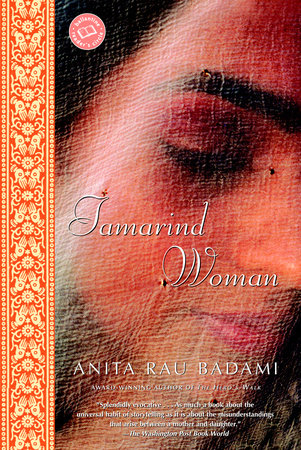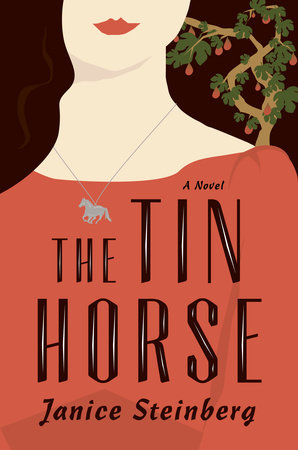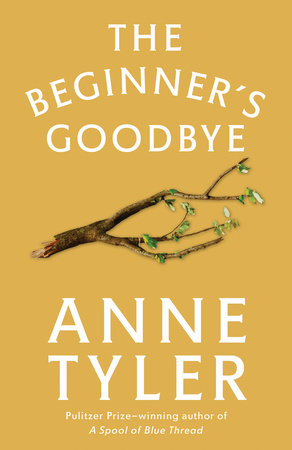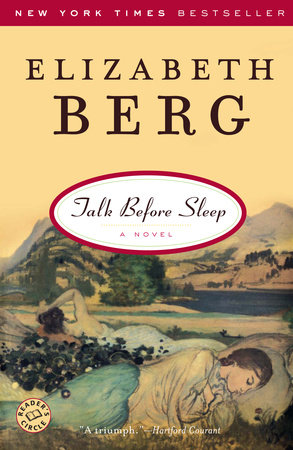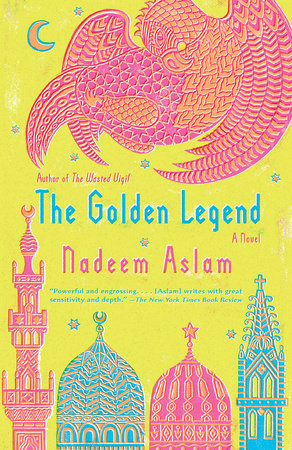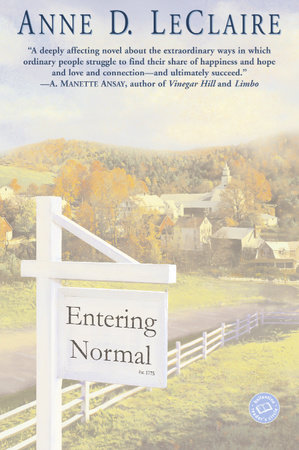A Conversation with Anita Rau Badami
Q: I’m curious about the title of this book, Tamarind
Woman. Given the description of a tamarind tree that
prefaces the story, what inspired you to write this story?
A: I was interested in exploring the lives of women separated
not only by time (in terms of age, that is), but by
space as well. Kamini has moved from the old world into
the new. Her mother, who grew up in a different world,
was trapped in it and therefore developed an acidic
tongue to deal with her frustrations.
Q: Do you think her acidic tongue—and therefore the
nickname “tamarind woman”—ended up giving Saroja
strength or sorrow?
A: Saroja’s acidic tongue was her only defense against the
rule-bound world in which she found herself. She used
sharp words to carve a place for herself in that world. So,
yes, I suppose her tongue did give her strength of a kind.
It also brought unhappiness.
Q: The structure of Tamarind Woman is really interesting.
Why did you isolate the two main characters and have
them narrate their stories in flashback?
A: This book is largely about memories and the labile,
shifting nature of memory. Most relationships float on a
sea of memories, and this is particularly so in families
where each member of the family uses memory to connect
with parents or siblings. In Tamarind Woman, when
Kamini, the daughter, moves away from Saroja, the
mother, both spatially (to Canada) and temporally (by
growing up), she depends on memory to reconstruct the
past she has left behind. But by bringing in Saroja’s side of
the story, I wanted to play with the idea that memory
is insubstantial and subjective. How do we know which
story is true?
Q: Indeed, I am fascinated by the idea of memory and its
historical/psychological fluidity. I think almost everyone
looks to the past for some sense of continuity within
oneself and one’s family. If memory is insubstantial in nature,
where do you think we find the substance of these
identities?
A: Both Kamini and Saroja use their memories to create
a sense of who they are in relation to their separate and
intertwined worlds. Each one has a different memory of
the same events sometimes, but it is this that solidifies and
becomes the reality each believes in.
Q: Reading the novel, I found myself imitating Kamini
in my attempt to sift through stories in search of the
truth. Kamini and Saroja’s accounts of the past oftentimes
conflict, pointing to not only their different perspectives,
but their differences as storytellers. Do you think Kamini
and Saroja are more dissimilar than similar? Why?
A: There’s a scene in the novel where Saroja rubs oil
through Kamini’s hair while giving her a bath. More than
just bathing her daughter, this represents Saroja giving
herself—her ideas and stories—to her daughter in a
wordless ceremony. In many ways, I think Kamini and
Saroja are quite similar. Although Kamini is quick to berate
her mother for what she believes is a false rendition
of the past, she herself holds on to her stories and her
point of view just as tightly as Saroja does. Perhaps in a
similar situation, Kamini would become more like her
mother. Instead she falls into very different circumstances
and thus grows away from the possibility of becoming her
mother.
Q: Roopa, Kamini’s sister, had very little voice in the
novel.Why was she so silent?
A: Well, she did have a voice in one version of the novel.
But she bored me! Also I thought it would have been too
much to have three competing versions of the truth. So
Roopa was abandoned in favor of a better story.
Q: Anytime a woman author writes a story about a
mother-daughter relationship, it seems difficult not to
read the author’s experiences into the story. How autobiographical
is Tamarind Woman?
A: The landscape of the novel—that is, the railway
backdrop—is from my own experience. My father was an
officer in the Indian Railway, and I lived the life that
Saroja and Kamini do. The only character who is somewhat
true to life is the mad aunt Meera, who is based on a
neurotic relative. All the other characters are composites
of people I have known or have met briefly and been curious
about.The emotional experiences and lives of these
characters are fictitious. I have invested a lot of my own
emotional energy into creating these characters, projecting
myself into each of their heads and hearts in the
process of writing them. But this is, I suppose, what most
writers do.
Q: As you wrote the novel, which character did you
identify with the most? Which one did you find the most
difficult to construct?
A: I found it hardest to build Kamini, the daughter.
Saroja, with her furious, untrammelled nature, came first
and most easily to me.
Q: I think most people would agree that Saroja’s character
was the easiest to relate to. Do you think people naturally
identify more easily with passionate, perhaps even
vitriolic, characters?
A: Yes, perhaps. Isn’t there at least one moment in your
life when you have wanted to give vent to all your frustrations?
To let your tongue run loose? Saroja doesn’t
always allow the rules of decency to dictate her behavior
or her voice.
Q: Did you write the two sections separately, or did the
two characters emerge simultaneously?
A: The mother came first. For a long time it was her
book alone. And then, about fifty pages into the book,
I realized that she could be making up the entire story,
so I wanted a different voice to provide balance. Thereafter,
the sections were written simultaneously—a little
on Kamini, a little on Saroja, and so on.
Q: Earlier we talked about how memories and storytelling
constitute the major theme of Tamarind Woman.
Did you have a different theme in mind when first starting
the novel?
A: You have to remember that Tamarind Woman was my
first novel. Initially all I wanted was to give voice to a
fierce, angry woman. I know a lot of women just like
Saroja, both in and outside my family. I had no real understanding
of what I was trying to do with this character,
I just wanted to explore her life, her mind, her world. At
the time I was preoccupied with memories.An uncle had
just died, and I remember thinking about all the stories
that died with him. It was then that I started thinking
about memories and how they are turned into family
lore, and so the book was born with more characters and
their alternate versions of family history.
Q: There aren’t any strong male characters in the novel.
Did you intend to write a story dominated by women?
A: Yes, I did. I come from a family of strong, opinionated
women, and I wanted to write about people like them.
Q: Both Tamarind Woman and your subsequent novel,
The Hero’s Walk, grapple with the issues of family roles,
identities, and traditions in modern India. Do you think
India is going through an identity crisis?
A: I would like to preface this reply by pointing out that
my view of India is that of a partial outsider. I live in
Canada, and although I was born and brought up in India
and lived there for three decades, now my vision of it is
mediated by distance. That said, I think India is one of
those countries that will always be in a state of flux. Its
identity—and this is why I find it so fascinating as a
writer—arises out of this endless state of change, chaos,
and contradiction. It is true, though, that India has been
changing at an accelerated pace in the past decade or so.
This change seems to be concentrated in urban India
rather than in the villages.
Q: Almost all the contemporary literature I’ve read on
Indian culture seems to countenance the theme of India
and Indians in a state of constant contradiction.Where do
you think this “endless state of change, chaos, and contradiction”
arises within Indian culture itself ?
A: Yes, it is a country that goes back as a unified
cultural—if not political—entity at least five thousand
years. So many religions, sects, castes, and classes exist
simultaneously, rubbing up against each other, sometimes
in harmony and other times uneasily. Ancient ideas, beliefs,
and rituals still exist and are practiced even as the
modern world intrudes into this fabric of the past. The
past and the present are just two of the thousands of
threads that are woven into this fabric. India has and will
probably always be an intricate, noisy collision of people,
time, histories, beliefs, languages—a source of any number
of stories.
Q: What were the reactions of your family members to
Tamarind Woman? Did the women like it more than the
men?
A: Most liked it. My younger cousins loved the book,
but the older relatives were more cautious in their enthusiasm.
I remember an aunt saying to my mother,“I’d better
watch what I say . . . she’ll put it in her book!” There
was a general perception among family members that the
book had to be about someone in my life.
